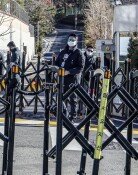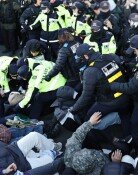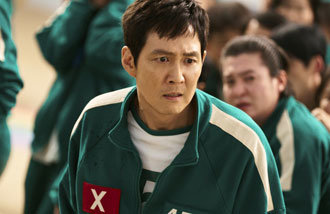President Yoon presides emergency economic meeting
President Yoon presides emergency economic meeting
Posted October. 28, 2022 07:39,
Updated October. 28, 2022 07:39
South Korean President Yoon Suk-yeol presided over the 11th Emergency Economic and Public Livelihood Meeting on the second floor of his Yongsan Office, which was broadcasted live on TV on Wednesday. So far, the meeting was held behind the closed-door after the president’s introductory remarks, but this time the 80-minute-long meeting was entirely disclosed to the public. The government’s aim was to transparently inform the people of its considerations for dealing with the global economic crisis and its strategies to revitalize the economy.
The meeting gained attention not only for the fact that it was live-streamed. It allowed the public to directly listen to how the new administration will break through the current crisis with ever-growing economic uncertainties. However, although it was somewhat meaningful as the first-ever televised emergency economic meeting, the discussion ended with regrets for not being fruitful enough. Each ministry ended up merely listing its policies.
Deputy Prime Minister and Minister of Economy and Finance (MOEF) Choo Kyung-ho presented his diagnosis of the current situation as predicted, such as “we are faced with a complex crisis,” “the potential growth rate fell to around 2 percent,” and “next year will be harsher than this year.” “Boosting exports is the key,” added Choo mentioning the government’s measures to foster major industries, including semiconductors, secondary cells, and shipbuilding, and the sectors based on overseas contracts, such as nuclear power plants, the defense industry, and construction infrastructure. “The contract price of secondary cells reached 560 trillion won,” Choo said. “The defense industry exports will reach 13 billion dollars this year.” The meeting continued with ministers introducing their ministry’s policies and asking for the budget to the MOEF rather than having in-depth discussions on specific issues.
As the meeting was set for only 80 minutes, it might have been not easy to include intensive discussions. However, they could think of an option to give a thorough analysis to let the public deepen their understanding of the current economic crisis and clearly state the government’s current priorities and policy directions. The meeting gave the impression that the government was busy giving a glance, which cannot be a solution to address the ‘emergency’ that each economic player is going through in real life.
Korea’s economic crisis is at its peak. It is allegedly clear that the country’s trade balance will record a seventh-month consecutive deficit this month. On Wednesday, the Bank of Korea announced that the GDP in the third quarter of the year grew by 0.3 percentage points. The meeting marks the 11th emergency meeting. Live streaming the presidential economic meeting is worth developing in the future in that it can boost the government’s interactions with the public and calls for the public officials’ hard work. However, for the televised meeting to not turn into a mere ‘show,’ the government should stay alert by turning the meeting into a ‘war room.’







